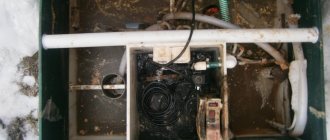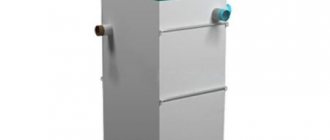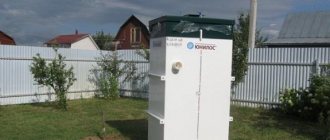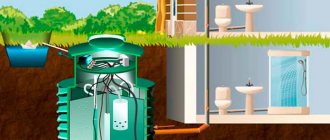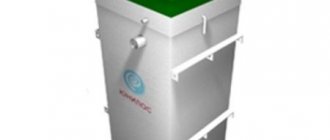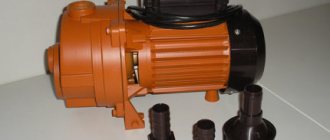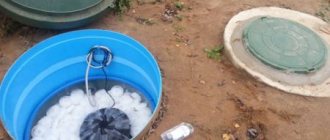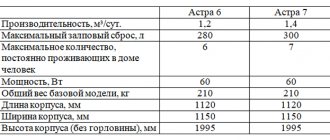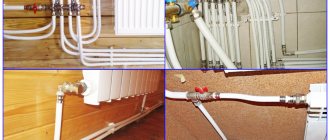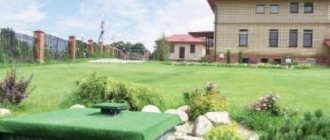Septic tank Unilos Astra 8 is a biological wastewater treatment station designed for the installation of a sewer system in private houses, cottages and other residential buildings where no more than 8 people permanently live. The installation uses a combined method of liquid clarification: settling alternates with the work of microorganisms.
Astra 8 is a septic tank that was developed and put into production by the SBM-group company. The company specializes in the production of equipment for wastewater treatment plants. It manufactures products at its own facilities and sells them on the domestic and foreign markets under the Unilos brand. The company is confident in the high quality of its products, which is confirmed by various certificates.
Specifications
| Model | Salvo discharge (l) | Efficiency (m3) | Weight | Dimensions (mm) |
| Astra 8 standard | 350 | 1,6 | 290 | 1500*1160*2360 |
| Astra 8 Pr (with pump) | 350 | 1,6 | 290 | 1500*1160*2360 |
| Astra 8 Midi (extended) | 350 | 1,6 | 315 | 1500*1160*2500 |
| Arsta 8 Midi Pr (with pump) | 350 | 1,6 | 315 | 1500*1160*2500 |
| Astra 8 Long (extended) | 350 | 1,6 | 370 | 1500*1160*3000 |
| Astra Long Pr (with pump) | 350 | 1,6 | 370 | 1500*1160*3000 |
More about Astra 8 Long
Here is a local station that will purify wastewater by 98%.
A distinctive feature of the device is the complete absence of negative impact on the environment. The purified water can simply be drained onto the ground through a pipe or the liquid can be reused for watering plants. Equipment of this type can be used in a small cottage or in a country house for two families. The device is easy to use and does not require constant maintenance - it is carried out once every 6 months.
The Astra 8 Long septic tank consists of four chambers: a receiving chamber, an aeration tank, an additional settling tank, and a sludge stabilizer. Cleansing begins by filling the first chamber with water. The principle of waste removal is based on the action of bacteria. The long modification is used by the owner of the house, who uses a sewer pipe located at a depth of about 1 meter.
Septic tank Unilos Astra 8 is designed for wastewater treatment after 8 people
In one day, the installation is capable of filtering 1,600 liters of sewage. It can easily accept a load of one-time liquid discharge of 350 liters.
If sewer pipes are buried 60-90 cm, it is recommended to install the Midi model.
When the pipes are buried at 90-120 cm, Astra 8 Logan Station will be an ideal option.
Standard modifications are intended for pipes laid no deeper than 60 cm.
The autonomous sewage system Unilos Astra 8 is equipped with a biological filter with aerobic bacteria. A favorable environment for bacteria is created by two compressors that operate alternately, which guarantees uninterrupted high-quality wastewater treatment.
Sewage flows into the first tank, where it is divided into sediment, fats and water. In the same chamber, wastewater is mixed with activated sludge.
Then they enter the aerator with bacteria. The compressor enriches the liquid with oxygen, bacteria are activated and accelerate the process of decomposition of organic compounds.
Next, the semi-purified wastewater enters the third compartment, where it undergoes secondary settling. And the nitrogen level is restored.
The fourth chamber is for activated sludge. The water is completely clarified and goes out. Purified water can be used as technical water or an additional infiltrator can be installed to drain water into the ground.
CONNECTION DIAGRAMS FOR SECURITY DETECTORS
EQUIPMENT AND SECURITY SYSTEMS
OPS CCTV ARTICLES MORE…
Alarm system » Device » Installation » DIY » Connecting security detectors
Detector connection diagram
(
Astra, Harp, Glass, Rustle, Photon
, in short - any) is always given in the passport of a specific alarm device, but only contains the assignment of the terminal block contacts (example on the left). It is worth noting that the example given here is maximum and is rare.
Almost always the block has one pair of monitoring station contacts and power connection contacts. Two pairs of monitoring station contacts are sometimes found on some combination detectors. The additional contact “RES” is inherent in the “Astra 5” detectors, the TMP contacts are typical for the “Shoroh” detectors. The abbreviations used indicate:
- 12V GEN “+” - polarity and supply voltage
- Monitoring station - control panel pair (detector output informing about its status)
- REZ - additional contact for connecting the terminal element of the alarm loop (resistor). It is not connected in any way with the detector circuit, it just hangs in the air, that is, it is a technological
- TMP (TAMP) - tamper switch contacts - open when the detector housing is opened
A diagram for connecting several detectors to an alarm loop (that is, connecting them to each other) is, as a rule, not given, and this, despite its apparent simplicity and obviousness (on the right is a structural diagram of connecting security alarm devices) can pose a serious problem for beginners.
Most security detectors have a monitoring station output (control pair), implemented on the basis of relay contacts. Moreover, in the “security” (“normal”) mode, the contacts are closed, and when the detector is turned off or switched to the “alarm” mode, they are open. Therefore, connecting a remote control pair of such detectors to an alarm loop
is carried out sequentially, with the installation after the last detector (IN) of the final element of the alarm loop, in most cases a resistor (R).
How the alarm sensors actually connect to each other to form an alarm loop is shown in the four pictures on the left. The detector switching diagram shown in the upper left figure is very rare. The only thing that can be useful from it is connecting tamper contacts (for example, for “Shorokh 2” detectors). True, often these contacts, even if they exist, are ignored, leaving them hanging in the air.
The following example of connecting security detectors is of practical importance and is used, for example, when organizing an alarm loop for the second line of security
using Astra 5 detectors.
I want to say that the color scheme in the wiring diagrams of alarm sensors is used not only for beauty and ease of perception. In practice, the connection of security detectors is carried out by a four-wire line, each of the wires of which has its own color, which greatly facilitates the installation of the alarm loop.
The third switching circuit is a special variant of the previous one and is used when the detector does not have the “RES” terminal. (The black circle indicates soldering of wires). The options discussed above are good when using a hidden alarm cable.
In this case, the connecting line is led out of the wall or other building structure directly under the detector, which covers the output location, and all switching is carried out in the alarm device housing (the design of the room does not suffer).
The disadvantages of this method of installing detectors are the difficulty of maintenance (to find a fault, you need to open the device case), the relatively small free space inside the case, and the miniature size of the terminal block. Sometimes this method of installation becomes truly a piece of jewelry.
This is especially evident when installing detectors of the alarm loop of the first line of security.
The inclusion of magnetic contact detectors, which have flexible terminals, along with terminal detectors, makes switching inside the device body, as a rule, impossible. You can, of course, use soldering, but then the question of ease of troubleshooting during operation of the fire alarm system (sometimes errors made during installation) again arises. The best option here is the use of switching devices, as demonstrated by the latest example of connecting security detectors, including magnetic contact detectors.
Once again, I draw your attention to the fact that alarm detectors that have closed contacts in the “norm” mode are included in the alarm loop sequentially. There is a good way to check that the sensors are installed correctly in the alarm loop. Follow the connection chain in the direction of the arrow on the yellow wire to the exit on the green wire. If you managed to pass through the contact pairs of ALL sensors, and only ONCE for each, then everything is in order. This is something like Euler's seven bridges problem.
© 2010-2020. All rights reserved. The materials presented on the site are for informational purposes only and cannot be used as guidance documents.
The main advantages of the Astra 8 autonomous station
- Loyal cost
- Wastewater treatment 99%
- Environmental friendliness
- No vacuum cleaner services required
- Trouble-free operation
- Compactness
- Strength
- Guarantee
Flaws
- Energy dependence
- Requires replenishment of bacterial colony
- It is prohibited to dispose of chemicals, chlorine, medications and some detergents into drains. The bacteria will die. We'll have to replenish the colony.
Installation
- A pit is dug in width and depth 50 cm larger than the septic tank.
- Trenches are dug for sewer pipes
- The bottom of the pit is covered with a layer of sand 10-15 cm thick.
- The sand is leveled and compacted.
- The trenches are also filled with a small layer of sand and a slope of 2-3 cm per linear meter is arranged. This is necessary to create gravity flow.
- It is recommended that the cable be pulled together with the pipes; for this, it is insulated in a special corrugated pipe of small diameter.
- A foundation pit is being prepared for infiltrators or a filtration well.
- The septic tank sinks to the bottom of the pit. The weight is impressive, you will need special equipment.
- The pipes are being connected. It is important to maintain the tightness of all joints.
- The station is filling with water.
- The exhaust pipe is being connected
- The pit is filled with soil mixed with sand up to the neck.
- A trench is being dug.
- Disposal of water into a storage tank, well or soil is organized.
- The cable is connected. All systems are checked.
Important! Like any other septic tank, the Astra 8 station should be installed in accordance with SNiP.
- The septic tank must be located at least 5 meters from the home
- At least 3 meters from green spaces
- 10 meters from hand or stream
- The minimum distance to a source of drinking water should be 30 meters.
- At least 5 meters from the road
- If there is a lake or pond nearby, then the septic tank should be 50 meters away.
- All pipes are laid at a slope from the house to the septic tank and from the septic tank to filtration facilities
- The sewer system must have ventilation
- On highways it is necessary to install inspection, turning, junction and, if required, differential wells.
In any case, before organizing a sewer system, you should draw up a diagram of it.
Installation and maintenance
In order for the Unilos Astra septic tank to work smoothly, it is important to install it correctly, following all installation rules. It is equally important not to violate the rules for operating a septic tank.
Installation rules
If possible, it is better to entrust installation to professionals. Despite the fact that the installation process cannot be called complicated, when installing a station, you need to take into account the local conditions on the site - soil characteristics, the level at which soil water is located, etc. Installation of a septic tank includes the following operations:
- Preparing a pit and trenches for pipes. It is important to make a shock-absorbing cushion of sand and gravel 20 cm high at the bottom of the pit. There should be a free space of 30 cm wide around the perimeter of the station for backfilling using a special mixture.
Advice! If the soil in the area is unstable, then it is better to concrete the bottom and walls of the pit. Under normal conditions, this operation can be eliminated, since the thick walls of the polypropylene body of the septic tank and the presence of stiffeners on it gives the installation a high level of mechanical strength.
- The station is installed in the finished pit; it is important that it stands exactly and exactly in the center of the prepared pit.
- The next stage is connecting the inlet and outlet pipes.
- Next, the pit is backfilled with a mixture of dry sand and cement. When backfilling, you must simultaneously fill the installation with water to prevent deformation of the plastic housing.
- Now you need to connect the power supply and carry out commissioning activities.
Operating rules
The rules for using Astra septic tanks do not differ from the recommendations for using other local sewage systems. The system is prohibited from resetting:
- large and inorganic (for example, construction) waste;
- antibacterial and disinfectants (for example, cleaning powders that contain chlorine);
- caustic liquids - acids, solvents, alkalis, etc.
Periodically, accumulated sludge will need to be removed from the sludge receptacle; you can do this yourself using the built-in pump. Maintenance of the septic tank must be carried out according to the instructions.
Rules
In order for the system to work flawlessly, several rules must be followed
- Do not pour inorganic waste into drains (construction waste, polyethylene, large debris, etc.)
- Remove accumulated sludge as necessary. You can do this yourself. Not much content.
- Regularly replenish the bacterial colony.
- Avoid using cleaning agents and detergents containing chlorine and acid.
Advantages of modification
The main advantages of the Astra Long 8 septic tank:
- Recycles all household waste. You can do your usual household chores - wash, wash and clean dishes.
- High level of water purification. The drained liquid does not harm the environment - it can be poured into the ground or used to water plants.
- No smell. The septic tank can be located at a distance of 3 meters from the house (a shorter distance is not recommended for technical reasons).
- Easy installation. The procedure takes a couple of hours.
